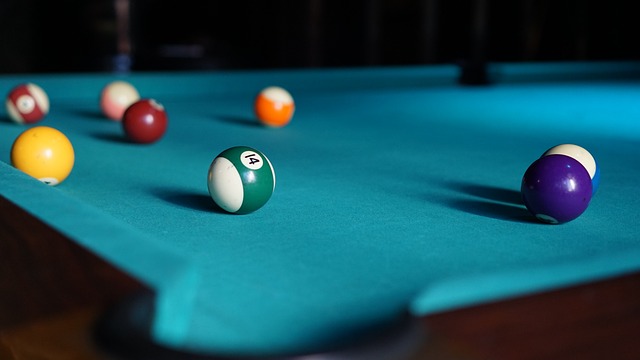Pool table weights vary based on construction: 1-piece slate tables (650–800 lbs) are heavier than 3-piece designs (400–600 lbs). 3-piece tables, with separate top and legs, offer easier assembly, transport, and handling, making them a preferred choice for frequent movers or those with limited space. "How heavy is a pool table?" considerations hinge on construction type for optimal setup, transport, and maintenance.
“Uncover the surprising weight difference between 1-piece and 3-piece slate pool tables. In this comprehensive guide, we demystify the factors that contribute to these variations in weight, offering insights into the construction and materials that shape their distinct densities. From the average weights of each type to a detailed comparison chart, we delve into what makes one table heavier than another. Explore how table size, slate thickness, and additional features play crucial roles, as well as the distinction between professional and recreational models.”
- Understanding Pool Table Construction
- – Explanation of 1-piece and 3-piece slate pool tables
- – Materials used in each type and their impact on weight
Understanding Pool Table Construction

Pool tables come in various configurations, but two common types based on construction are 1-piece and 3-piece designs. Understanding the weight difference between these is crucial for buyers, especially those considering assembly or relocating their tables. A 1-piece slate pool table, as the name suggests, has a single, solid piece of slate as its playing surface, typically weighing between 650 to 800 pounds (294–363 kg). This design offers a sturdy and uniform playing experience due to the absence of joints.
On the other hand, a 3-piece table features a separate slate top, legs, and sometimes an interior support structure. The weight range for this style is generally lower, with the top piece alone weighing around 200 to 350 pounds (91–159 kg), while the entire table, when assembled, can tip the scales between 400 to 600 pounds (181–272 kg). This construction method allows for easier transportation and assembly, making it a popular choice for those who frequently move their tables or have limited space.
– Explanation of 1-piece and 3-piece slate pool tables

Pool tables come in various configurations, but two popular types stand out: 1-piece and 3-piece slate tables. In terms of construction, a 1-piece table features a solid, undivided slate surface, making it a single unit. On the other hand, a 3-piece table has three separate sections: the head, middle, and foot, all topped with a sleek slate sheet.
When considering how heavy is a pool table, these designs significantly impact weight. Due to its solid construction, a 1-piece slate table tends to be much heavier, often weighing between 600 to 800 pounds or more. In contrast, the 3-piece design allows for better weight distribution, making it easier to handle with a typical weight range of 400 to 600 pounds. This difference is essential for understanding the table’s setup, transport, and overall maintenance requirements.
– Materials used in each type and their impact on weight

Pool tables, whether 1-piece or 3-piece, are crafted from a variety of materials that significantly influence their overall weight. A 1-piece slate pool table, as the name suggests, features a single, solid piece of slate for the playing surface, often supported by a metal frame. This design results in a heavier table compared to its 3-piece counterpart due to the density of both the slate and the metal components. The slate itself can weigh several hundred pounds, depending on its size and thickness, making it the most substantial part of the table.
In contrast, a 3-piece pool table consists of three distinct parts: the head, foot, and slate playing surface. While the slate section is still significant in weight, the addition of two separate pieces allows for some distribution of mass, leading to a lighter overall structure. The metal frameworks in a 3-piece table are typically lighter gauge, further contributing to its reduced weight compared to the solid construction of a 1-piece design. This difference is particularly notable when considering how heavy a pool table can be, with 1-piece tables often tipping the scales much higher than their 3-piece alternatives.
In terms of weight, a significant difference exists between 1-piece and 3-piece slate pool tables. The 3-piece design, characterized by its modular structure with separate legs, typically weighs less than its 1-piece counterpart due to the use of lighter materials for the table top and frame in the leg section. On average, a standard 7-foot 3-piece slate table can weigh around 60-80 kilograms, while a comparable 1-piece design might tip the scales at 90-120 kilograms. Understanding these variations is crucial for consumers when choosing a pool table, especially considering the impact on assembly and placement in their home or venue. Thus, knowing “how heavy is a pool table” can help ensure a smooth setup experience.
